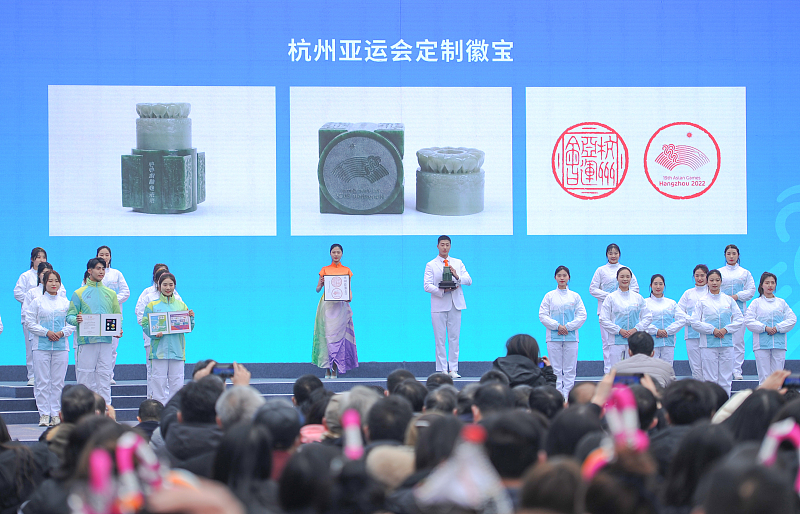

As the 19th Asian Games is set to open in Hangzhou City, the unveiling of the bespoke jade seal emblem of this grand sporting event has surprised many with its intricate design.
The official jade seal of the event, which also carries the emblem of the 19th Asian Games underneath, was authorized by the Hangzhou Asian Games Organizing Committee and produced by the Hangzhou Xiling Seal Society. It was jointly designed by Sang Jianhua, the director of Xiling Seal Society, and Shen Jianyuan, a Chinese arts and crafts master.
The design showcases many classic elements of Chinese civilization spanning 5,000 years. From the ancient Liangzhu culture to the modern Asian Games, from the Qiantang River tides to the West Lake, from millennium-old classics to the theme of the 19th Asian Games, "Heart to Heart, @Future," the jade seal blends elements of China's rich history, culture and landscapes with traditional and modern Chinese characteristics to mark this grand sporting occasion.
The design of the upper part of the jade seal was inspired by the Hangzhou Olympic Sports Center Stadium, which features the shapes of lotus flower. The jade seal adopts the round-and-square shape, an auspicious symbol in traditional Chinese culture.
The lower part of the jade seal takes the Cong jade pendant as the basis of its form to reflect the vitality of China. Dragon and phoenix motifs are carved into the surface of the jade. At the same time, the emblem on the bottom of the jade seal focuses on the theme of integrity, solemnity and success.
In ancient China, jade was a symbol of inner beauty. Jade seals, as a traditional feature of Chinese culture, were an essential way of marking important events. The 19th Asian Games' jade seal emblem is not only the stamp of this sporting event, but is also expected to make a memorable souvenir for visitors to the event.